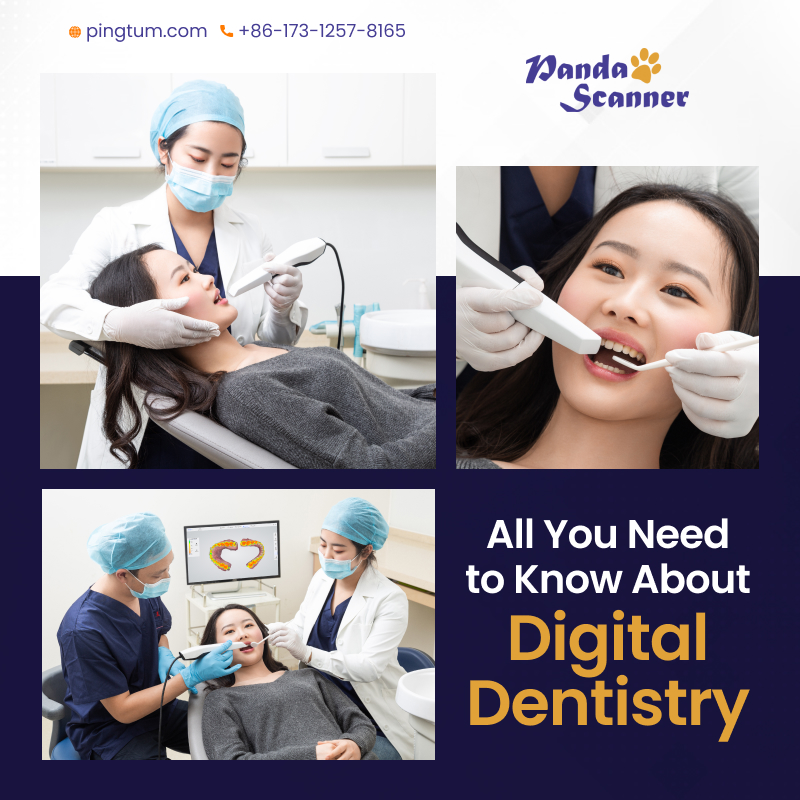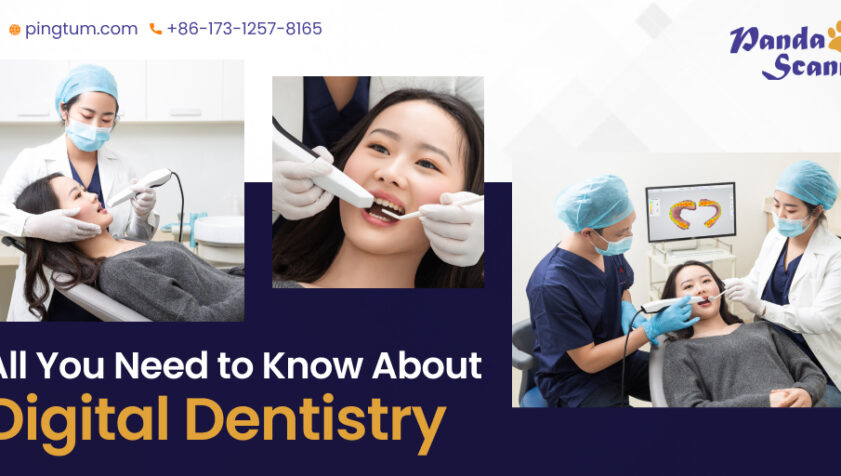As intelligent and advanced digital tools are being introduced to the field of dentistry, it is undergoing drastic change. Thus, digital dentistry has become equally popular between patients and doctors. Equipment like an intraoral scanner is one of the best discoveries in this field as it has completely changed the dental scanning method. Today, the procedure has become extremely simple, easy, faster and most important pain-free and risk-free. So, no wonder patients who are anxious about dental procedures can relax during the dental scanning easily without any fear of gagging or choking, which is commonly caused by holding alginate materials in traditional dentistry. Similarly, many other digital dental tools have contributed to improving dentistry.
So, to be precise digital dentistry has successfully gained the trust of patients who used to abhor traditional dentistry. If you are a dentistwho has just heard about digital dentistry, and has become curious and wants to learn about it, then here is your help. In this article, we have explained a-z everything that you need to know about digital dentistry.

What is Digital Dentistry?
The use of computer-based or digital technology in dental treatment is called digital dentistry.
Different Digital Dentistry Tools
Digital dentistry has revolutionised many aspects of dental care in modern times. From analysing your oral health till the last stage of the treatment you receive today is facilitated by several digital dental tools. Here, let’s take a look at the different digital dental tools.
Intraoral cameras
Intraoral cameras have made dental scanning unimaginably easy, and therefore, they are in high demand. These are tiny cameras that can easily reach areas that are difficult to access otherwise. When it comes to scanning, they do a great job and let dentists properly scan the oral cavity of a patient. These China intraoral scanners have replaced the old round mirrors that are used in traditional dentistry by dentists to get a proper look into the patient’s mouth. The tool allows dentists to get a zoomed view of the patient’s teeth and get a clear picture of the issues.
Cancer screening tool
A few years back it was never imagined that there would be a tool to detect oral cancers. Today, we have such a tool, and it is called a cancer screening tool. With the help of fluorescent imaging technology, this screening tool helps dentists to spot any signs of cancer in the oral cavity. Therefore, with the help of this tool dentists can detect underlying problems early in and prevent them from becoming a bigger issue later. In fact, according to a review that was published in Oral Diseases, the cancer screening tool helps to spot lesions and malignant disorders.
Digital radiography
X-rays are a well-known technology that we have always heard about that helps dentists to find out gum and teeth problems in patients. However, the process involves a lot of steps such as film processing, and also inconvenient since it needs to be stored before their delivery. Further, the small empty x-ray plates when pushed inside the mouth of the patients it pains a lot. This is where digital radiography can come to the rescue. Digital radiography simply projects light in the patient’s mouth and instantly the real-time images are displayed on the side monitors so dentists can view the results. These images can also be stored on the server or the cloud and shared with others easily.
Take Away
Today, dentistry is in a much better position, and this has been only possible with the help of digital dentistry. Dental professionals today can offer treatments that are precise, fast and comfortable for patients. Further, unlike early days dentists do not have to struggle to share information with the laboratories, which is very important when it comes to treatment results. Miscommunication or mishandling of materials during transferring from clinic to laboratories can easily occur in traditional dentistry, however, since in digital dentistry, virtual data transfer plays a major role, these mistakes can be avoided. So, if you have not yet embraced digital dentistry it is high time that you consider doing it.






